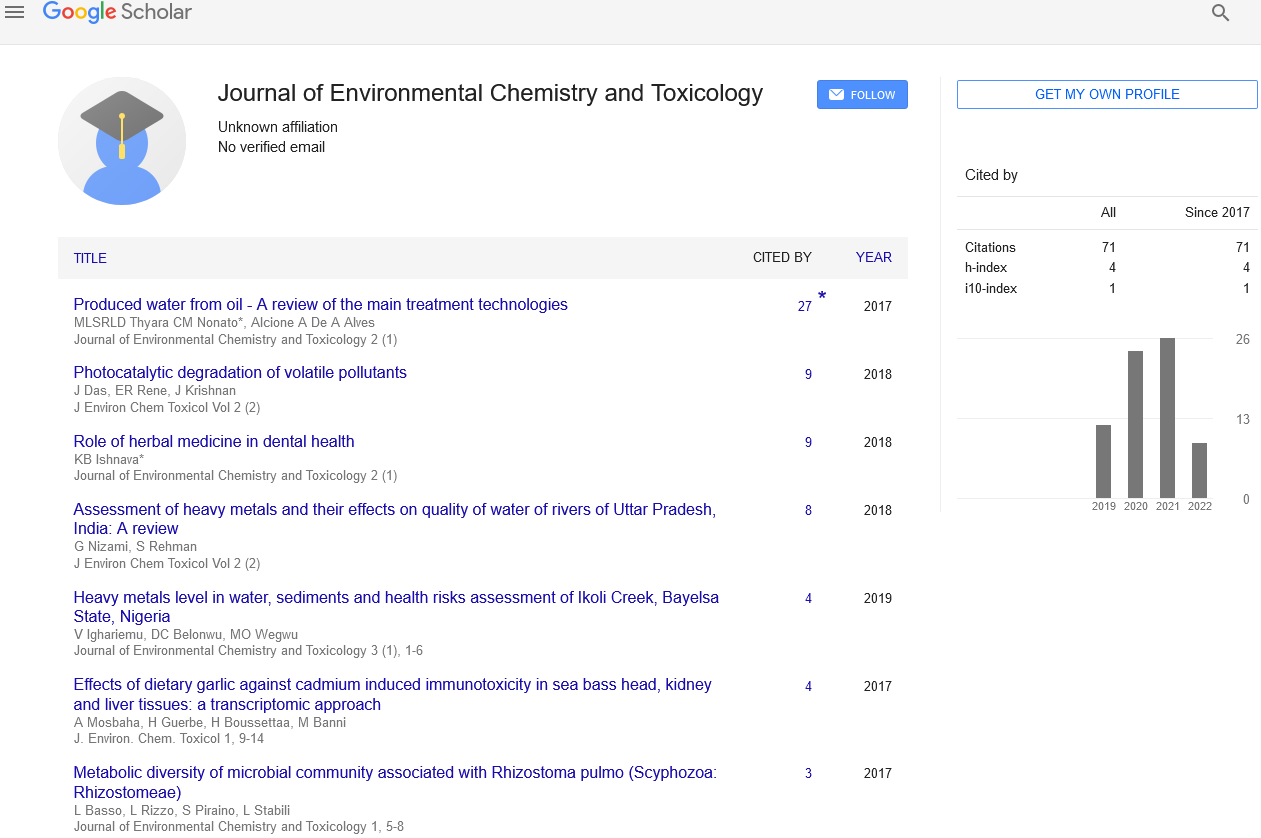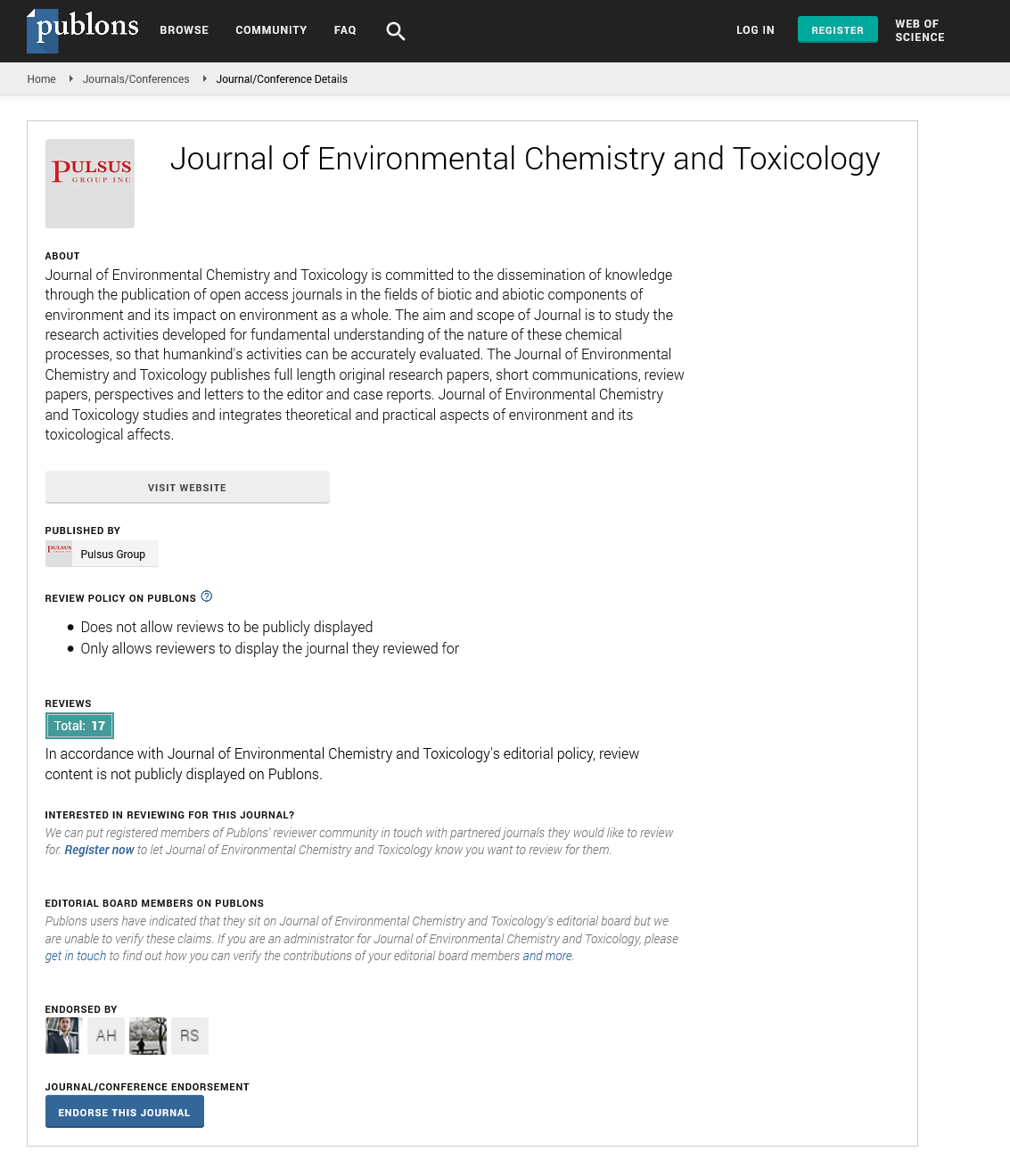Are too much reference works present in flourishing literature related to marine biotechnology?
Received: 06-Sep-2017 Accepted Date: Sep 07, 2017; Published: 18-Sep-2017
Citation: Trincone A. Are too much reference works present in flourishing literature related to marine biotechnology? J Mar Microbiol. 2017;1(1):3-4.
This open-access article is distributed under the terms of the Creative Commons Attribution Non-Commercial License (CC BY-NC) (http://creativecommons.org/licenses/by-nc/4.0/), which permits reuse, distribution and reproduction of the article, provided that the original work is properly cited and the reuse is restricted to noncommercial purposes. For commercial reuse, contact reprints@pulsus.com
The oceans host the greatest diversity of life in unexplored habitats, they are the world’s largest ecosystem, covering the large part (ca. 70%) of the earth’s surface. Marine biodiversity has been evaluated by the Census of Marine Life ascertaining that at least 50% and potentially more than 90% of marine species are undescribed by science [1]. The sustainable exploitation of these marine resources characterized by the protection of the oceans and of the organisms populating them is only possible by a deep understanding of the complexity of the marine biodiversity. The corpus of this knowledge will certainly fuel various applications and, in a nutshell, itself constitutes the core of marine biotechnology. Increasingly labeled “blue biotechnology”, this wide field covers many aspects that are considered highly relevant to societal challenges, as has been well established in the EU Framework Program Horizon 2020.
In 2011 an editorial appeared summarizing the results of the European Science Foundation-COST Conference, “Marine biotechnology: future challenges”, held in 2010. The conclusions pointed out that “marine biotechnology opportunities will continue to rely on efforts from basic research for knowledge and understanding, through proof of concept to pre-commercialization and demonstration” [2]. Generally speaking the enormous interest in marine biotechnology resulting in the worldwide flourishing of editorial initiatives (journals, books, etc.) seems a direct consequence of that omen. However the pipeline from basic research to proof of concepts and commercialization should provide editorial products characterized by high presence of original reports from basic research, but a close look to the amount of this literature indicate some unbalancing among original research articles and books including other reference works, at least in a specific areas. This case is discussed here for general marine enzymes and for the specific case of marine carbohydrate active enzymes.
The database Science Direct with access to 3800 scientific journals in major scientific disciplines is one of the most adopted source for scientific literature survey. When content type of the results from a search is analyzed, in this database the products are presented in three categories: Journals, Books and Reference work. Only under the first the original articles are listed, while the last two categories could be globally considered as reference materials. Filters for analyzing on a yearly basis the amount of published material are obviously also present. Using Science Direct for compiling a very recent review about enzymatic processes in marine biotechnology [3] resulted in the emerging of interesting aspects on the ratio of original articles vs. reference works. In comparison to previous surverys, a new approach for searching the literature and presenting a more refined analysis was adopted for the mentioned article review. The focus of the literature search was centered on the enzymatic process more than on a single novel activity and the survey organized according to the biotechnological field of applications where bioprocesses, based on marine enzymes and/or marine biomasses, are central. This helped to easily recognize the fields of application; biorefinery value-chain, food industry, fine chemistry processes and marine biomarkers and derived applications (bioremediation) were individuated. Selected original articles were presented in tabulated form while modern review articles and other reference material were used to compile general parts of each paragraph depicting the present state of the art of the related field. Interestingly, analyzing the yearly distribution of the number of hits in the search for articles it appeared clear that fewer than 20 hits per year characterized past years (1993–2011) while a doubled value was found for 2012–2016 interval time. This picture probably reflects the strategic efforts of various funded programs created by the European Commission to support and foster research in the European Research Area and similar actions in other parts of the world. Getting the heart of the matter it was concluded that seaweed biomass seems to have great potential as a raw material in a biobased economy, offering advantages such as no completion with food production, absence of fertilizers or pesticides in the valuechain and positive relapses removing an excess of nutrients from marine environments. Development is still needed in other areas of technology such as the improvement of large-scale cultivation and fractionation, and the identification of new marine microbial strains to break down macro algal polysaccharides. Use of microalgae in food preparation is a classical topic in food applications where different projects studying these aspects are in development. As for fine chemistry and laboratory techniques, different case studies recently illustrated the importance of bio catalysis, considering the specificities of marine enzymes with respect to their terrestrial counterparts. In the bioremediation field the importance of stereo selectivity in aquatic ecosystem biotransformation using marine bacteria was evident and all the information reported by these studies on processes are of great interest to bio catalysis practitioners.
A look to the list of references used to depict the analysis above, with respect to the total amount of editorial products sorted out, revealed that fewer than half of the hits were indeed cited in the references list. About 20% of the hits were represented only by books. Additionally, only four scientific journals hosted more than 10 original articles: Bio resource Technology, Food Chemistry, Process Biochemistry and Chemosphere together accounted for not far off 100 articles. The top specialist marine-oriented journal was Algal Research, with only eight papers. Therefore, scientific interest in marine enzymatic processing can be considered successfully published in nonspecialized journals such as the ones cited above.
During the search for a next review report still in preparation, focused only on marine carbohydrate active enzymes, a similar trend about content type of editorial products has been noticed. Among other biocatalysts marine carbohydrate active enzymes are found spread in all applicative fields above individuated: (i) the bio refinery value-chain, where the provision of biomass is one of the most important aspects, (ii) the food industry to deal with the enzymatic procedures adopted in food manipulation; (iii) the selective and easy extraction/modification of structurally complex marine molecules, where enzymatic treatments are a recognized tool to improve efficiency and selectivity; and (iv) marine biomarkers. In scientific literature the interest for marine originating carbohydrate active enzymes appeared from results of research projects conducted since long, in the 1960s, with particular focus on the hydrolytic capability and selectivity of these enzymes that often have represented a crucial tool in problematic structural identification efforts facing with the complexity of macromolecular structures before the era of high resolution NMR and MS facilities [4]. Marine carbohydrate active enzymes still appear today as an important topic [3,5-8]. The search related to this class of enzymes has been conducted using the name of the enzyme in a window of two years (2016-2017) interval time. The W/in function (proximity operator, in=15) has been used. A value between 20-40% sorted out for original articles with respect to total amounts, as shown in Table 1 reporting the actual number of hits. The correct use of the proximity operator is an interesting point that can be argued. Low-medium values are able to sort keywords in phrases, while higher numbers results in hits where keywords are both present in long paragraphs. More and more articles sorted could not be related at all to the subject using high values. However while in the first analysis for general enzymatic processes [3] a value of W/50 was adopted, the more specific, not yet published review analysis, has been based on a value of W/15 with a minimal noise due to completely unrelated hits and still 20-40% of reference works are present in the lists.
| Search term useda | Year limit | Hits | Original articles |
|---|---|---|---|
| Marine agarase* | 2017, 2016 | 22 | 12 |
| Marine chitinase* | 2017, 2016 | 30 | 12 |
| Marine amylase* | 2017, 2016 | 33 | 10 |
| Marine laminarinase* | 2016, 2014 | 5 | 6 |
| Marine glucanase* | 2017, 2016 | 7 | 6 |
| Marine alginate lyase* | 2017, 2016 | 22 | 6 |
| Marine ulvan lyase* | 2017, 2016 | 4 | 1 |
| Marine fucoidanase* | 2017, 2016 | 7 | 2 |
| Marine carrageenase* | 2017, 2016 | 10 | 4 |
| Marine xylanase* | 2017, 2016 | 22 | 9 |
All search terms are used with a proximity factor W/15
Table 1: Search terms adopted for Science Direct database and number of total hits compared to original articles (without Reference works and Books as indicated by the database search engine).
This analysis puts the question of the title in place. Why too much reference works are present in flourishing literature related to marine biotechnology? Have highly funded projects been too much asked only for applicative results? Could a demanding high TRL (TRL, technology readness level) have had an orienting effect on the research outputs of these innovative actions towards a different type of literature? Indeed it is hopeful that early grand result of the governmental supporting of marine biotechnology is at the moment producing pre-commercialization reports, patents etc. with primary applicative aim. In fact these data are neglected in a normal literature search and appearance of high quantity of reference works products could be acting as a mask/substitute for them.
Generally speaking in 2017 we are on the second part of a second big boost given to marine biotechnology as a sector where progresses are believed to be of considerable benefit to societal challenges. Former recommendations dated 2010 arising after previous strategic initiative [9], judged the field only partially implemented. A more modern opinion in October 2016, identified an optimistic future for marine biotechnology, with the sustainable utilization of marine bio resources in establishing new markets, generating revenue and increase employment [10]. It is also possible that the literature is still showing only a partial result of the first boost and more time is needed to appreciate in full the complete output of supporting this field. A more complete picture and precise answers will be obtained when scientific literature related to applicative results (i.e. patents) will be included in the analysis.
REFERENCES
- Census of Marine Life. 2017.
- Dixon B, Jaspars M, McDonough N, et al. A new dawn for marine biotechnology in Europe. Biotechnol Advances. 2011;29:453-6.
- Trincone A. Enzymatic Processes in Marine Biotechnology. Mar Drugs. 2017;15:93.
- Kobata A. The history of glycobiology in Japan. Glycobiology. 2001;11(8):99R–105R.
- Giordano A, Andreotti G, Tramice A, et al. Marine glycosyl hydrolases in the hydrolysis and synthesis of oligosaccharides. Biotechnol J. 2006;1:511–30.
- Trincone A. Potential biocatalysts originating from sea environments. J Mol Catal B Enzym. 2010;66:241–56.
- Trincone A. Marine Biocatalysts: Enzymatic features and applications. Mar Drugs. 2011;9:478–99.
- Parte S, Sirisha VL, D’Souza, et al. Biotechnological Aapplications of marine enzymes from algae, bacteria, Ffungi, and sponges, In: Kim S-K, Toldrá F Eds, Advances in food and nutrition research. Academic Press. 2017;80:75-106.
- Position Paper 15 Marine Biotechnology: A New Vision and Strategy for Europe September 2010.
- Hurst D, Børresen T, Almesjö L, et al. Marine biotechnology strategic research and innovation roadmap: insights to the future direction of European marine biotechnology. 2016.






